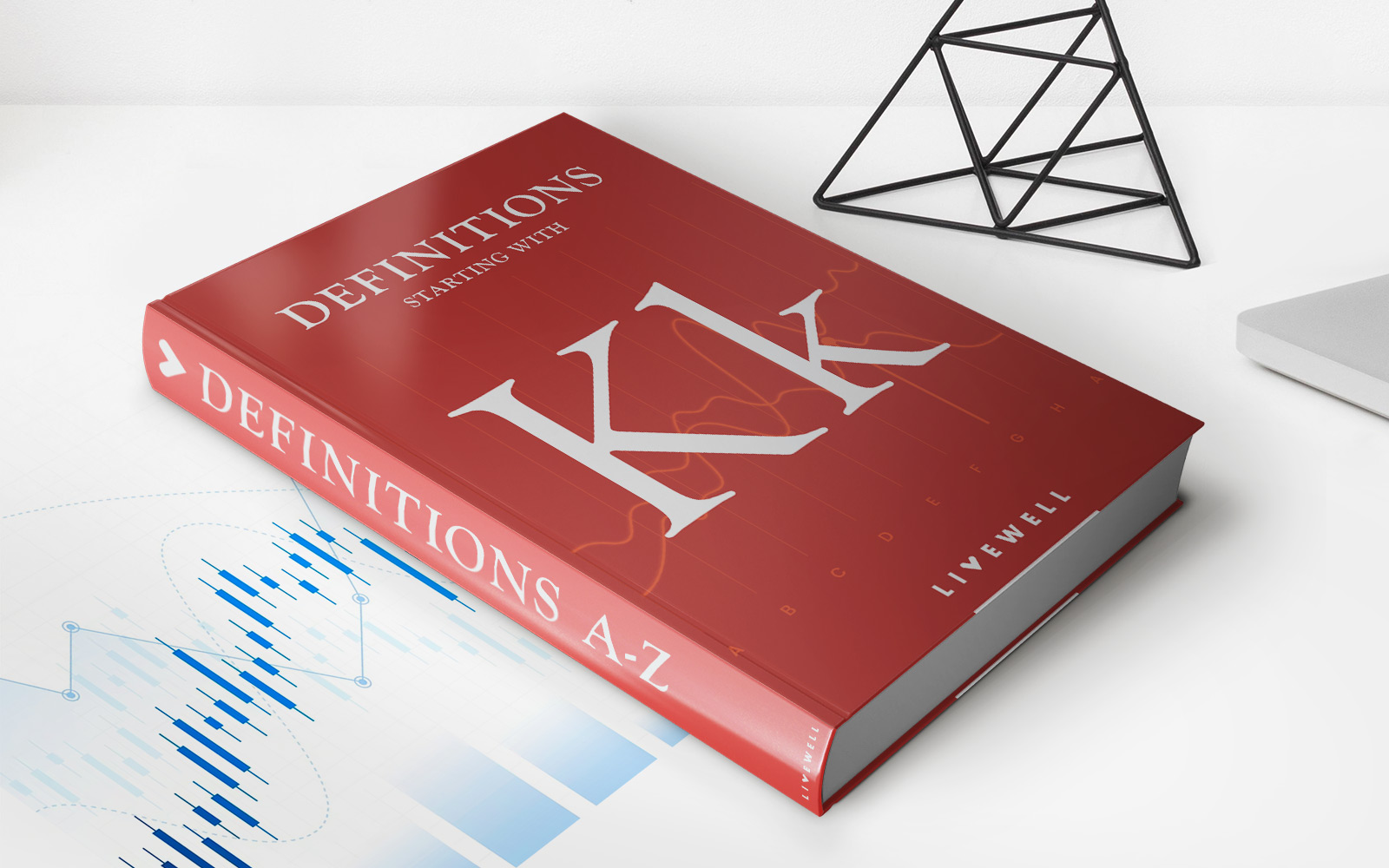

Finance
What Is Catch Up In Private Equity
Published: January 22, 2024
Learn about catch up in private equity and how it impacts finance. Understand its significance and implications in the financial industry.
(Many of the links in this article redirect to a specific reviewed product. Your purchase of these products through affiliate links helps to generate commission for LiveWell, at no extra cost. Learn more)
Table of Contents
Introduction
Private equity is a dynamic and complex investment strategy that involves investing in privately held companies with the aim of generating substantial returns. One of the key components of private equity fund structures is the "catch-up" provision, which plays a crucial role in aligning the interests of general partners (GPs) and limited partners (LPs). Understanding the concept of catch-up in private equity is essential for investors and industry professionals seeking to navigate the intricacies of this investment landscape.
The catch-up provision is a mechanism designed to ensure that GPs receive their share of profits only after LPs have received their initial investment and a previously agreed-upon rate of return. This provision is intended to incentivize GPs to perform effectively and generate superior returns for LPs before they are entitled to a share of the profits.
In this article, we will delve into the intricacies of catch-up in private equity, exploring its mechanics, examples of its application, and the criticisms it has faced within the investment community. By gaining a comprehensive understanding of catch-up provisions, readers will be better equipped to evaluate private equity investment opportunities and make informed decisions regarding their investment portfolios. Let's embark on a journey to unravel the nuances of catch-up in private equity and gain valuable insights into this integral aspect of the investment landscape.
Understanding Catch-Up in Private Equity
At its core, the catch-up provision in private equity serves as a mechanism to balance the distribution of profits between GPs and LPs. It is structured to ensure that GPs receive a higher share of profits after the LPs have achieved a certain level of return on their investment. This provision is particularly significant in aligning the interests of GPs and LPs, as it incentivizes GPs to prioritize the profitability and success of the investment.
Under a typical catch-up provision, once the LPs have received their initial investment and a predetermined rate of return, the GPs are entitled to "catch up" and receive a more significant share of the profits until they are "caught up" to a previously agreed-upon percentage of the total profits. This mechanism ensures that GPs are motivated to maximize returns for the LPs before they can fully partake in the profits, thereby aligning their interests with those of the investors.
Moreover, the catch-up provision can take various forms, such as the "European" and "American" catch-ups, each with distinct characteristics and implications for profit distribution. Understanding these variations is crucial for investors and fund managers, as they directly impact the allocation of profits and the overall performance of the fund.
By comprehending the nuances of catch-up provisions in private equity, investors can make informed decisions regarding fund selection and assess the potential impact of these provisions on their investment returns. The next section will delve into the mechanics of catch-up in private equity, shedding light on the specific calculations and scenarios in which this provision comes into play.
Mechanics of Catch-Up in Private Equity
The mechanics of catch-up in private equity encompass the intricate calculations and scenarios that dictate how profits are distributed between GPs and LPs. To understand the mechanics, it is essential to grasp the fundamental components that drive the operation of catch-up provisions.
When a private equity fund incorporates a catch-up provision, the GPs are typically entitled to receive a higher share of the profits after the LPs have achieved a specified rate of return, often referred to as the "hurdle rate." Once the LPs have received their initial investment and the hurdle rate, the GPs can "catch up" by receiving a more significant portion of the profits until they reach a predetermined share of the total profits.
The calculation of the catch-up amount is contingent upon the fund’s performance and the specific terms outlined in the partnership agreement. Generally, the catch-up provision stipulates the percentage of profits that GPs are entitled to receive after the LPs have achieved the hurdle rate. This percentage, often denoted as the "catch-up rate," determines the extent to which GPs can benefit from the catch-up provision.
It is important to note that catch-up provisions can vary in complexity, with some funds incorporating multiple tiers of catch-up arrangements based on the fund’s performance. Additionally, the structure of the catch-up provision may differ between funds, with variations in the timing of catch-up calculations and the treatment of unrealized gains and losses.
Understanding the mechanics of catch-up in private equity empowers investors and fund managers to evaluate the impact of this provision on profit distribution and fund performance. By delving into the specific calculations and scenarios in which catch-up provisions come into play, stakeholders can gain valuable insights into the dynamics of private equity fund structures and make informed decisions regarding their investment strategies.
Examples of Catch-Up in Private Equity
To illustrate the application of catch-up provisions in private equity, consider a hypothetical scenario involving a private equity fund with a catch-up mechanism. Suppose the fund’s partnership agreement stipulates a catch-up provision whereby the GPs are entitled to receive 20% of the profits after the LPs have achieved a 10% hurdle rate.
Upon the fund’s realization of profits, the LPs first receive their initial investment and the 10% hurdle rate. Subsequently, the GPs are "caught up" to receive 20% of the remaining profits, effectively prioritizing their profit share once the LPs have attained the hurdle rate. This example demonstrates how catch-up provisions operate to align the interests of GPs and LPs, as the GPs receive a higher share of the profits only after the LPs have realized a specified level of return.
Another example involves the "European" and "American" catch-up structures, each with distinct characteristics. In the "European" catch-up, GPs are entitled to receive their catch-up allocation only after the LPs have achieved the hurdle rate, ensuring that the LPs receive their preferred return before the GPs benefit from the catch-up provision. On the other hand, the "American" catch-up allows GPs to receive their catch-up allocation concurrently with the LPs, providing GPs with greater flexibility in profit distribution.
Furthermore, consider a private equity fund with a multi-tiered catch-up provision, wherein GPs are entitled to receive varying percentages of profits based on the fund’s performance. For instance, the catch-up rate may increase as the fund surpasses certain performance thresholds, incentivizing GPs to strive for superior returns and aligning their interests with the fund’s overall success.
These examples underscore the diverse applications of catch-up provisions in private equity and highlight their significance in shaping profit distribution and incentivizing GPs to prioritize the interests of the LPs. By examining these scenarios, investors and industry professionals can gain a deeper understanding of how catch-up provisions operate within private equity fund structures and their impact on investment outcomes.
Criticisms of Catch-Up in Private Equity
While catch-up provisions in private equity are designed to align the interests of general partners (GPs) and limited partners (LPs), they have faced criticisms within the investment community. One prominent critique revolves around the potential for catch-up provisions to incentivize GPs to prioritize short-term gains at the expense of long-term value creation. Critics argue that the structure of catch-up provisions may encourage GPs to pursue strategies focused on immediate profits, potentially overlooking sustainable growth and value generation.
Another criticism pertains to the complexity and opacity of catch-up provisions, which can pose challenges for LPs in comprehending the intricacies of profit allocation. The intricate calculations and variations in catch-up structures across different funds may lead to confusion and ambiguity, potentially hindering transparency and investor confidence.
Furthermore, some critics argue that catch-up provisions can create asymmetrical risk-reward dynamics, particularly in scenarios where GPs are entitled to a disproportionately high share of profits after the LPs have achieved the hurdle rate. This asymmetry may lead to a misalignment of incentives, as GPs could prioritize their catch-up allocation over the long-term success of the investment, potentially undermining the interests of the LPs.
Additionally, the potential for conflicts of interest has been cited as a concern associated with catch-up provisions. In certain situations, GPs may have the discretion to make investment decisions that could impact the timing and magnitude of their catch-up allocation, raising questions about the potential for conflicts between the interests of GPs and LPs.
Despite these criticisms, it is important to note that catch-up provisions are integral to the private equity landscape and are subject to ongoing discussions and evaluations within the industry. While critics highlight potential drawbacks, proponents argue that well-structured catch-up provisions can effectively align the interests of GPs and LPs, incentivize performance, and foster a balanced approach to profit distribution.
By critically examining the criticisms of catch-up provisions in private equity, investors and industry professionals can gain a comprehensive understanding of the potential challenges associated with these mechanisms and evaluate their implications for investment strategies and fund selection.
Conclusion
The concept of catch-up in private equity represents a pivotal element in the intricate dynamics of profit distribution and incentive alignment within investment fund structures. By prioritizing the distribution of profits to general partners (GPs) after limited partners (LPs) have achieved a specified rate of return, catch-up provisions aim to foster a symbiotic relationship between GPs and LPs, incentivizing GPs to prioritize the profitability and success of the investment.
Throughout this exploration, we have delved into the fundamental principles and applications of catch-up provisions, shedding light on their mechanics, variations, and real-world examples. It is evident that catch-up provisions play a crucial role in shaping the distribution of profits within private equity funds, influencing the behavior of GPs and the overall performance of the investment vehicle.
While criticisms of catch-up provisions have been articulated, it is essential to recognize that these mechanisms are subject to ongoing evaluation and refinement within the investment community. As the private equity landscape continues to evolve, discussions surrounding the efficacy and implications of catch-up provisions remain pertinent, underscoring the importance of aligning the interests of GPs and LPs while promoting sustainable value creation.
Ultimately, a nuanced understanding of catch-up provisions in private equity empowers investors and industry professionals to make informed decisions, evaluate fund structures, and navigate the complexities of profit sharing and incentive alignment. By leveraging insights into the mechanics and criticisms of catch-up provisions, stakeholders can navigate the private equity landscape with enhanced clarity and strategic acumen, ultimately contributing to a more robust and equitable investment environment.














